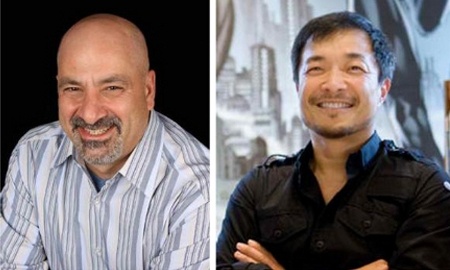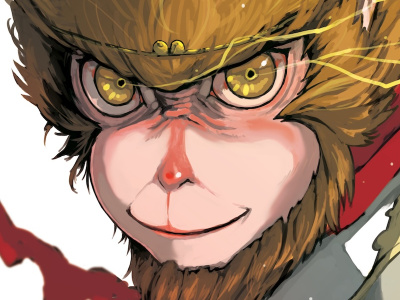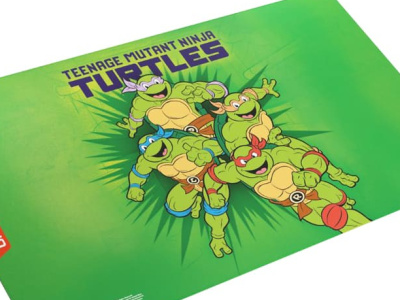We talked to DC Co-Publishers Jim Lee and Dan DiDio at San Diego Comic-Con to catch up on Rebirth and a couple of other current topics. In Part 1 of our two-part interview, we talk about the response to Rebirth, cutting overprints on Rebirth titles, and expectations for returns. In Part 2 we talked about what’s happening at Vertigo, why The Killing Joke is blowing up sales records, comic pricing strategy, and their expectations for the top DC releases between now and the end of the year.
What do you think went best about the Rebirth relaunch?
Lee: The fact that it was so well received. We had our own internal estimates for what the books would do. The first issues were strong as you would expect, but we had some second issues outselling the first issues, which never happens. And then by issues three and four, we were at levels that were much higher and consistent so there’s very little drop-off, even between issues three and four. It was surprising to see how well it was being received.
We knew we had good content. We felt really strong about the sales incentives and the things that we put into places for the marketing and publicity. You set it all up, you just don’t know how it’s going to be received.
DiDio: One of the things I liked best is the fact that after moving the company from East Coast to West Coast, making a single unified business, hiring a large proportion of new employees because of the move, we were able to really re-establish ourselves, and I think this was a galvanizing fact to really pull the company together. It allowed us to reconnect with our fan base and reconnect with our retailer base.
We felt something was not working as far back as October New York Comic Con.
Yes, when we interviewed you there you were talking about it (see "ICv2 Interview: DC’s Dan DiDio and Jim Lee at NYCC, Part 1").
Then on top of that, we went to the ComicsPRO meeting. There was a rather spirited discussion between the retailers and ourselves and we knew that they were concerned.
That’s when we first started to feed out information about Rebirth. I’m happy to say that we went through a level of skepticism in February, to some level of excitement in March, to this all-out explosion of sales success and positive critical response to the material. It seems like a really short window, but the amount of time and energy spent on this was extraordinary.
A couple of things you did with the trade that we weren’t aware of previously-- one was the retail pricing of the newsstand editions at $3.99 (vs. $2.99 for the comic store editions).
DiDio: That’s been the case for a while. We’ve had separate pricing because percentages were dropping on the newsstand, distribution was getting more difficult…
How could you get below zero?
DiDio: …when they actually put them out. We actually raised that price two or three years ago.
A retailer just mentioned it to us.
I think what happened is some of the books were $2.99 and $3.99 and they were very aware of the $3.99 pricing for the rest of the industry. But with Rebirth we rolled prices back; we brought the price down to $2.99, so I think that’s why people are noticing it more.
So were you at $4.99 for the $3.99 books at newsstand?
DiDio: Yes.
We also heard from some retailers that your overprints were smaller on the Rebirth books. Is that true?
Lee: Yes. You have some very astute retailers. We generally did a little bit for damages. Because we made the books fully returnable, we wanted to have some value there. You can either do that or you’re going to overprint and basically make it available, and you stockpile and they can order as needed.
So if you’re going to make it that you can order as many as you think you’ll need and we’ll take them back, it just made sense to reduce the amount of overages that we normally publish.
Did you tell them that in advance?
DiDio: That was a policy that developed as we were going along. The reason why is also that we were also encouraging retailers to take the risk. We made the books 100% returnable but we also want to be judicious about how much we make accessible because I don’t want someone who’s normally ordering 10 books to order 10,000 so we had to put some parameters on that, too.
Lee: And let’s be honest, the numbers, on an absolute scale, are very small. We’re talking about maybe 1,000 copies that would be out there, and given the extraordinary success of Rebirth, it wouldn’t have mattered if we had printed 10% more, we would have been out.
It was more of a tightening up. And at the end of the year we also see how many books we have in inventory both on the periodical level and on the graphic novel and there’s a lot of bloat there. It made sense to tighten it up regardless of the returnability.
DiDio: Our overages are in line with most of the other publishers as well. We might have over extended at other points, but I think now we’re in line.
Anything about the relaunch that didn’t go as well as you’d hoped?
Lee: Not really. Nothing springs to mind as being problematic.
DiDio: One of the things that’s strange is we were planning #1s through September and possibly into October, but the relaunch was so strong at the beginning that we actually delayed some of the later books into next year to give them more time to spend, to build them creatively, but also we didn’t feel the urgency. We wanted to make sure we didn’t overwhelm the fan base right from the start with so many titles that we decided to delay some of the material. So we made slight adjustment on our schedule so books like Justice League America and Super Sons that we announced for later this year are moving into 2017.
Do you have any read on how the returns are going to go? We’ve heard from some retailers that they won’t have any returns and from others that there will be massive returns.
DiDio: There’s a number of forums where the retailers can work out shifting some of the inventory around, leveling out. We hope some of that of takes care of it. And we have certain percentages budgeted for the returnability based on the returns we received during the New 52. So it’s going to be disproportionate. Some people are going to return nothing, some titles are going to get a very high return, some titles are going to get a low return. You’re always going to get that balancing act going on.
You think it’ll come out about how you expected overall?
DiDio: That’s what we hope for. I’ll think we’ll see low returns on the #1s. Second and third month books, we might see a higher percentage. And by the fourth month, people are going to see what the rhythm is of their store. What we’re seeing already is a level of adjustment going on for the August numbers. Even though these books are returnable, you see them being even more conservative in their ordering, but still twice as high as where we expected them to be.
Lee: I was talking to retailers years ago and I was shocked when they told me that they ordered just for their pull customers or just enough to sell out that very first week. The whole idea behind returnability is stock the books. This is going to be a three-month rollout. We’ll take the hit if you have too many, but at the end of the day, we want to super-saturate the marketplace. We’d rather get returns than none, because that means everyone had enough copies on the racks.
Click here for Part 2.

Response to 'Rebirth,' Lower Overprints, Returns
Posted by ICv2 on August 2, 2016 @ 12:47 pm CT
MORE COMICS
Digital and DTC for Now, but Open to Retailers
June 12, 2025
Print manga is sold through the publisher’s webstore, but they are looking for retailers to carry their line.
In Black and White
June 12, 2025
IDW Publishing will launch a Twilight Zone comic anthology series, with the art in black and white, in September.
MORE NEWS
New Futuristic Farming Game by Andreas Odendahl
June 12, 2025
Capstone Games announced Suna Valo , a new farming game.
Now on Preorder
June 12, 2025
UVS Games revealed four Teenage Mutant Ninja Turtles playmats.








